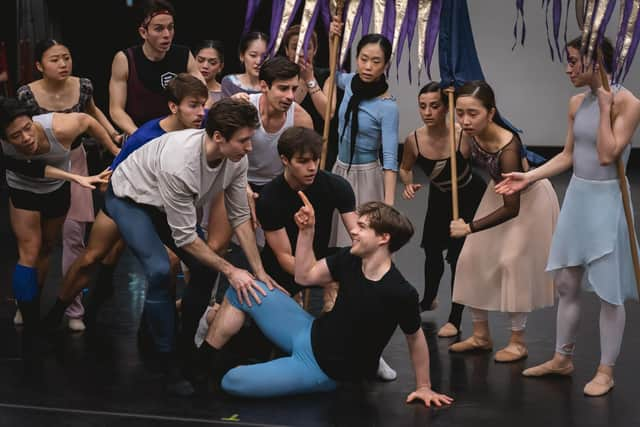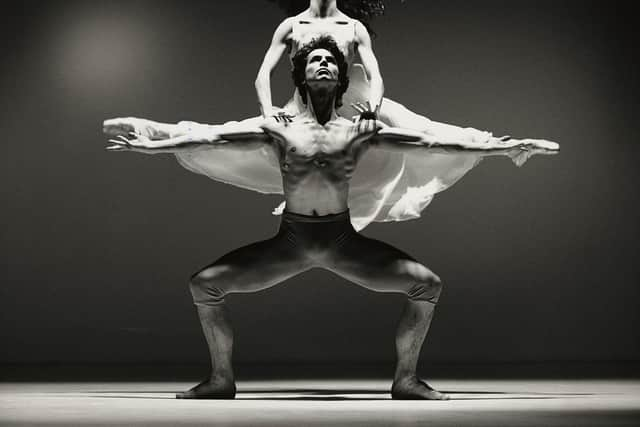Interview with Northern Ballet's artistic director Federico Bonelli about the company's revival of Romeo & Juliet
The much-loved, critically acclaimed adaptation of Shakespeare’s classic tale of doomed young love has not been performed for over 16 years, as it was forced into hiatus after sets and costumes were severely damaged in flooding, but now, following careful restoration, it is back. The ballet was created in 1991 by choreographer Massimo Moricone and the company’s then artistic director Christopher Gable who died in 1998. Following its premiere, the production enjoyed sell-out performances in the UK and internationally, as well as winning several awards and receiving a nomination for an Olivier Award.
For Federico Bonelli, the company’s current artistic director, a revival made sense for many reasons, not least because it is a production that he has a particular affinity with. “It is the one production of Northern Ballet’s that I have danced in,” he says. “I actually danced the balcony scene pas de deux in January 2020 for the company’s 50th anniversary gala, so I know the production well and I know the power of it. I also know it is a very important part of Northern Ballet’s history. It tells the story of Romeo and Juliet very well and it was clear to me that it was something to bring back so that a new generation of dancers, and audiences, would be able to experience it.”
Advertisement
Hide AdAdvertisement
Hide AdIt has been quite an undertaking to restore the set and costumes, with the help of generous donations, and has involved 26 specialist workers including carpenters, scenic artists, wardrobe staff, wig and drape experts, all working flat out for nine months. “A lot of effort has gone into it and everyone has worked really hard,” says Bonelli. “There is a lot of knowledge within the organisation and I try to use all of that. The head of wardrobe worked on the original production and there are artistic staff too who know it well. There has been a lot of excitement in the wardrobe and technical departments.”


Stay up to date with Yorkshire art and culture with our weekly newsletter
The dancers have benefitted from working with the original choreographer Massimo Moricone, as well as the original fight director Jonathan Howell, who has been instructing the cast in realistic street-fighting and swordplay. “I want it to look as authentic as possible, so I am very happy that they have been here,” says Bonelli. “And the dancers who played Romeo and Juliet back in 1991, William Walker and Jayne Park, have been sharing their talent and expertise.” The company has also been receiving guidance from former artistic director of the Royal Shakespeare Company, Gregory Doran. “He came to talk to the dancers about the text at the very beginning of the rehearsal process,” says Bonelli. “That was the first thing we did – to get into the storytelling, before learning the steps.”
Moricone has been putting the dancers through their paces. “Ballet is not written down like music so there are probably some small changes but it is basically the same choreography – in a sense we have the honour and the responsibility of implementing that vision,” says Bonelli. “It is very important to me that we do it in a very respectful way and using the talent within the company and of course from outside. Massimo was saying to me the other day what an amazing creative period for the company it was when the ballet was first created, so in a sense, we are also honouring that time.” And by extension, Gable’s rich legacy too.
There is something timeless about the story of Romeo and Juliet so whenever and however the story is told, it always has something to say. “I believe it is a very relevant story for today,” says Bonelli. “It is a joyous story until it becomes a tragedy. There is something incredibly powerful about it – the love of these young people is ruined by greed and senseless violence so that they are robbed of the life they desire. That’s why it is cathartic. If people have the idea that ballet is a gentle artform, they will see something different. That is what I think ballet can do very well – we have no words so there is this strong connection to the emotion of the piece.”
Advertisement
Hide AdAdvertisement
Hide Ad

That emotional connection is heightened by Prokoviev’s wonderful score which will be played live in performance by the Northern Ballet Sinfonia. “There is a real sense of excitement within the company of bringing this production back,” says Bonelli. “I am both terrified and excited to see it returning to the stage. I think it will be something really special for audiences to enjoy.”
Romeo & Juliet is at Leeds Grand Theatre, March 8-16, then touring, including to the Lyceum Theatre, Sheffield, April 2-6. northernballet.com